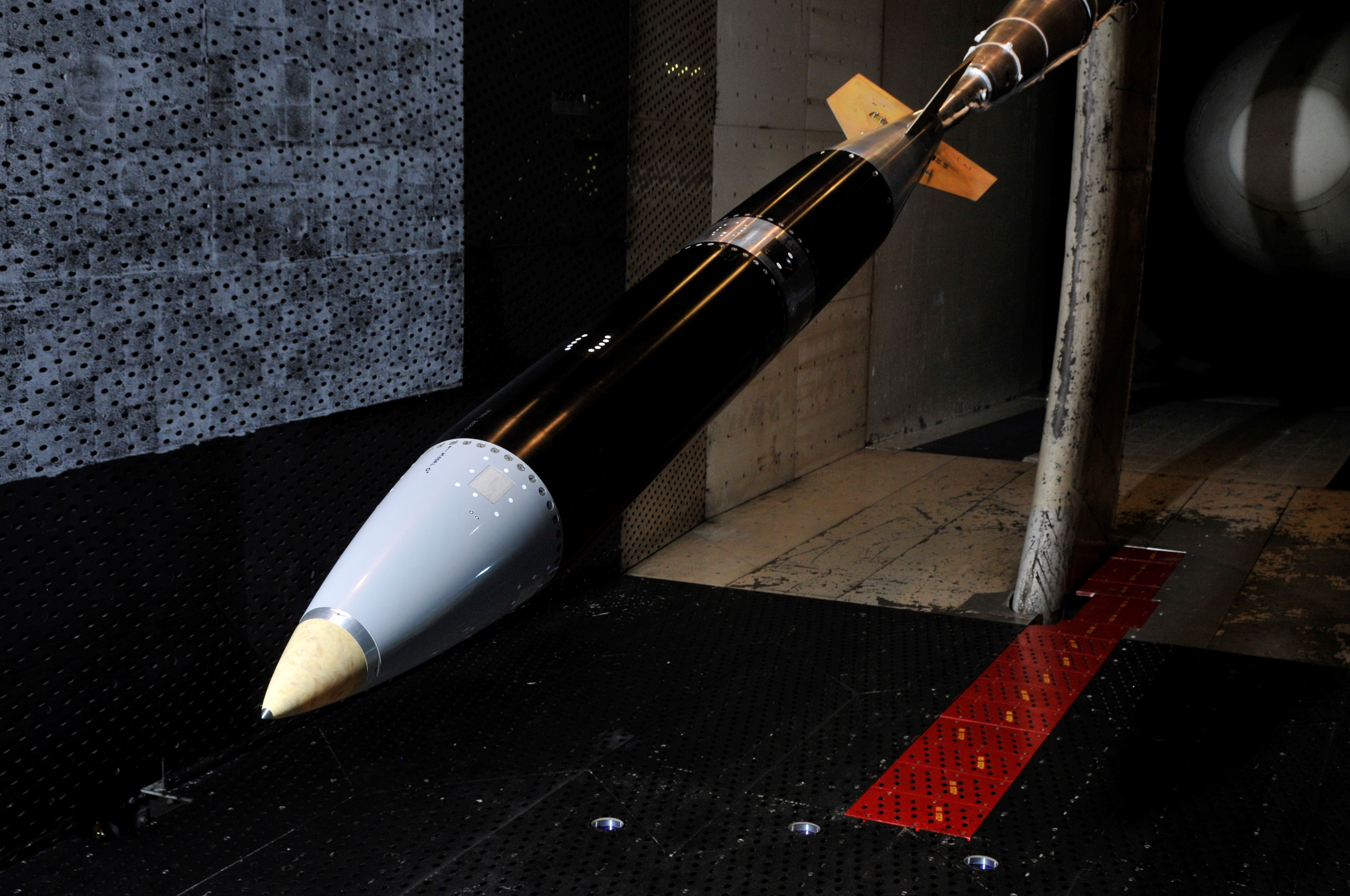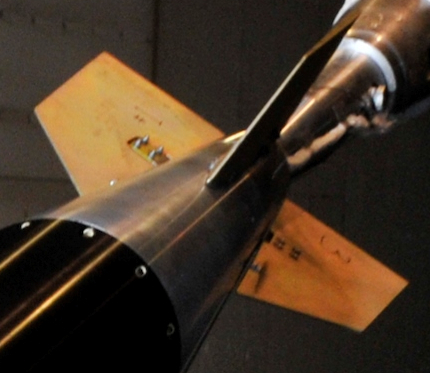
Click on image to download high-resolution version.
By Hans M. Kristensen
Additional design details of the new B61-12 guided standoff nuclear bomb are emerging with new images. The image above shows a full-scale B61-12 model hanging in a wind tunnel at Arnold Air Force Base.
The test “uncovered a previously uncharacterized physical phenomenon,” according to Sandia National Laboratories, that would affect weapons performance.
Apparently a reference to the interaction between weapons spin rocket motors and the new guided tail kit assembly. Existing B61 models do not have the guided tail kit and are less accurate than the B61-12.
The spin rocket motors were previously developed to stabilize the aerodynamic behavior of B61 bombs during descent. Previous wind tunnel tests of those weapons had revealed a so-called “counter torque” effect where plumes from the rocket motors worked against the fin performance, counteracting the torque from the motors and reducing the vehicle spin rate.

The B61-12 will use spin rocket motors similar to those on the B61-11, designed to improve stability during descent.
Because the B61-12 will be enhanced with a new guided tail kit to improve its accuracy, the wind tunnel test was necessary to determine how the new tail interacts with the spin rocket motors.
The wind tunnel image also shows the new guided tail kit in greater detail than seen before, including the four maneuverable fins that are controlled by an Internal Navigation System. In addition to improving accuracy, the fins also give the B61-12 a limited standoff capability. Current B61 versions do not have Internal Navigation System or standoff capability.

The new guided tail kit assembly is clearly visible on this image, slightly enhanced to sharpen features. The spike extending from the rear of the bomb is not part of the design but the arm that holds the bomb in place in the wind tunnel.
The NNSA budget request for FY2015 includes $643 million for development of the B61-12, which is expected to cost $8 billion to $10 billion to develop and produce. Two B61 hydrodynamic shots were conducted in 2013. The Air Force budget request includes nearly $200 million for development of the guided tail kit, estimated at more than $1 billion. Several hundred millions more are required to integrate the B61-12 on five different aircraft, including Belgian, Dutch, German, Italian and Turkish fighter-bombers. An estimated 480 B61-12 bombs are planned, with first production unit in 2020.
The B61-12 will also be integrated on the new F-35A Lightning II aircraft by 2025. The combination of the guided standoff B61-12 with the stealthy fifth-generation F-35A fighter-bomber will significantly improve the military capabilities of NATO’s nuclear posture in Europe.
This publication was made possible by a grant from the Ploughshares Fund. The statements made and views expressed are solely the responsibility of the author.
A military depot in central Belarus has recently been upgraded with additional security perimeters and an access point that indicate it could be intended for housing Russian nuclear warheads for Belarus’ Russia-supplied Iskander missile launchers.
The Indian government announced yesterday that it had conducted the first flight test of its Agni-5 ballistic missile “with Multiple Independently Targetable Re-Entry Vehicle (MIRV) technology.
While many are rightly concerned about Russia’s development of new nuclear-capable systems, fears of substantial nuclear increase may be overblown.
Despite modernization of Russian nuclear forces and warnings about an increase of especially shorter-range non-strategic warheads, we do not yet see such an increase as far as open sources indicate.